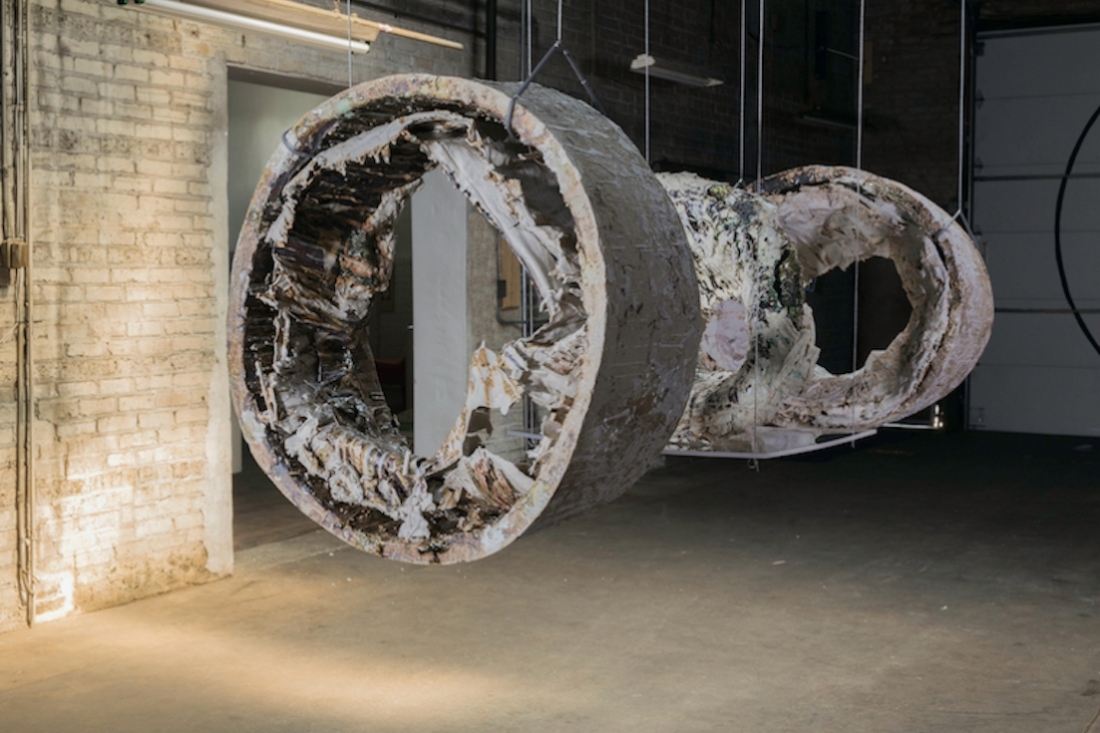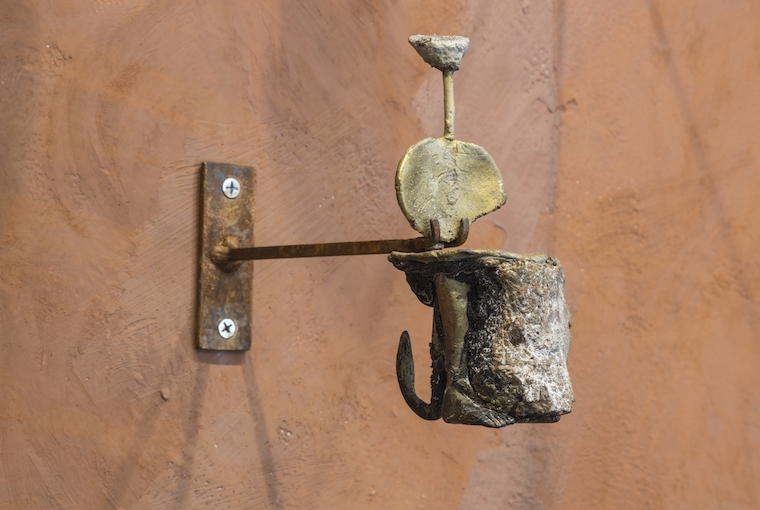
Grammertic shell

Grammertic shell
Elements from the forest and the natural milieu interact with more concrete man-made objects from your backyard. Branches wrap themselves around a child's chair, and some vignettes from a morning walk find themselves reinterpreted in calcium carbonate, as a glyph. Such is the work of Kushala Vora, who finds expressions in a myriad of mediums, including sculptures, paintings, and fossils. We explore the ideas of time, measurement, and material memory with the mixed-media artist below.
The Artist
I grew up in Panchgani, a hill station where the landscape holds a strong presence. I am drawn by the ecological landscape — the geology, change in the topography over seasons and the vegetation. I am also equally intrigued by its cultural landscape — the schools, societal roles, and its diversity. In my practice, I tend to return to my experience of this place often.
Higher education took me to New York, Tufts University in Boston, École Nationale Supérieure des beaux-arts in Paris, Dr. Bhau Daji Lad Museum in Mumbai and The School of the Art Institute in Chicago. I am grateful to have been able to experience life in different societies and interact with people from different backgrounds. It has played a large part in my ability to understand different perspectives and know that morals differ.

in the mud and slush
The Journey
I am not sure exactly when or how it happened, but I began to question if clocks told real time, what was Time in the first place, why did I have to write in a specific font in a ruled notebook, how measuring my ability in exams was a marker of my merit, and why some people sit on the floor while others sit on chairs? These questions came down to inquiring where our need for stability came from. I continue to seek our obsession with measurement and classification. I looked for answers in the visual pedagogy of space and a dive into semiotics. For instance, we are conditioned to think within the 0.7cm space in a notebook. The ruled lines make frequent appearances in my work. On the same lines, 1.339 Billion Seats is a sculpture of a ceramic replica of a child’s chair. The number is a reference to the population of India. The seat of the chair is made from notebook pages which are covered in clay, and as a result of firing have fossilised.
Time and Nature
I seek to find a different experience of time around me. I conceptually understood that time exists outside the constraints of clocks and calendars, but my body still gets stiff when I am late. Glyphs of a Temporal Landscape is a compilation of objects that I collected during my walks and daily life. Calcium carbonate that seeped from the concrete walls of the steel mill in Chicago, a bark of a tree, a peach seed, coal, rocks from multiple spaces are just some of the collected objects. Simultaneously , in my process of making, I mimic these other geologic experiences of time — layering clay over and over again to connect with geologic time. A new landscape is created on a line. By placing the objects on a line, I again make reference to the lines in a notebook. The same way as time is contained in measurement, landscape is contained in language. I attempt to release the objects and create sentences from my own gaze and thus, power. I ask myself, can I look at things as they are rather than what I want them to be?
In making, there exists unmaking, of my habits and conditioning. And in this, I relate my body and experience to that of a forest.
The Creative Process
I study material and materiality. My everyday process of making is seeped in seeing and observing. My studio practice becomes an extension of my attempt to unlearn my conditioning and habit. It becomes an inquiry on myself and that of the society, from which I have acquired these habits. Also, in most of my work, I try to connect the human experience with that of the landscape. In my most recent pieces, titled Phenomenon of Learning, I visited schools around Panchgani. I found classrooms covered in posters of definitions, and meaning. Shapes, letters, numbers, opposites, colours — it is a certain kind of colonisation. The layer behind these drawings is the landscapes around the school.
In The Works
The project that I enjoy the most in a given time is the one that I am currently working on. And at any given moment, I am always working on multiple works simultaneously. Sometimes there are spillovers, and sometimes the difference in approaches creates exciting connections. Currently, I am photographing the changing flora around my house. I am interested in understanding the history of what grows here, in Panchgani. I have come across some plants that might be seen as weeds, but are in fact edible and were earlier used commonly in cooking. I am also working on a multi-channel film, where I question my understanding of language and meaning. I put together stills of a Bharatanatyam dancer practicing her mudras, children learning numbers and an improv dancer responding to her surroundings.
Apart from this, I continue to practice working with clay. Organising space for conversation and connection is also an integral part of my day. I organise meetings wherein people can read, connect and share together.
The Pandemic and Beyond
Although this has been a challenging time, the pandemic has presented new opportunities to connect with people, without the limitation of our geopolitical boundaries. I gave myself the opportunity to be vulnerable, make mistakes and try my hand at new materials. For instance, my grandmother passed on to me a small wooden bead-loom when I was eight. I took this opportunity to teach myself some of the techniques. There has always existed a discomfort when I am in this in-between space. Although this feeling isn’t pleasant, I feel as if it is one of the most important parts of my process. It creates space for not-knowing and thus a renewed sense of seeing and exploration.